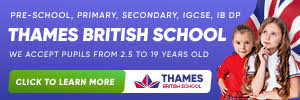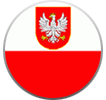On this page:
- List of schools
- Features of boarding
- Advantages of boarding schools
- Polish or foreign boarding school?
- The education system in Poland

Since boarding requires a lot of independence from the student, most boarding schools are high schools. This means they’re intended for students aged 13 to 18.
Many boarding schools also accept day students (who live at home), thanks to which the student community is very diverse, which benefits all students attending the school.
Boarding schools in Poland have dormitories, often assigned to several schools, where students of different ages live.
Features of boarding
Boarding schools have many things in common with other schools, but they also have some special features not shared by all private or non-public schools.
• Programs offered: boarding schools offer high-quality teaching. Many of them use the latest teaching methods and programs, enriching them with their own experience and solutions. They employ high-level specialists, including staff with PhDs. They work with renowned educational centres in other countries, and are often supported by the International Baccalaureate Organization, and offer IB programmes.
• Schools with a special focus: some schools also aim to develop students' specific skills and values, which is why we’ll find denominational (e.g., Catholic), artistic, sports, and even military schools among boarding schools. Shared student housing and constant access to school facilities is of special importance here, e.g., when playing sports or engaging in musical activities.
• Tuition fees: tuition fees in boarding schools are usually higher than in full-time schools, as they include the cost of meals and accommodation for the student. Additional expenses may include participation in optional classes (e.g., learning another language), textbooks, uniforms, and school trips.
• Admissions: each boarding school has its own application requirements. Typical requirements include interviews with parents and child, exams and presentations, and assessments of learning progress based on certificates and exam documents. Schools also have clearly marked deadlines when these documents are due.
Advantages of boarding schools
Boarding schools provide many scientific, educational, and general development benefits.
• International student community: boarding schools eagerly accept students from abroad, thus creating an international environment in which children and teens from all over the world learn. Learning and being in such a culturally diverse environment is a great experience, both for language and general learning.
• Support systems: boarding schools strongly support young people in developing and making life choices. They provide not only help during learning through tutoring and mentoring, but also have special counseling programs. This helps students meet academic requirements and adjust to the social environment.
• Special educational needs: Some boarding schools offer education for students with special educational needs, for example, for children with Asperger’s Syndrome, Autism, or ADHD. There are full- and part-time integrated special education classes which offer accommodation. These students are educated by teachers specializing in special education.
• Rich resources: private boarding schools, like many other non-public schools, allocate significant resources to equipment and activities. This applies not only to the quantity and quality of IT equipment (computers, interactive boards, etc.) and the latest scientific aids, but also to the equipment of art studios and sports facilities, as well as to extracurricular activities outside of school.
• Small classes: boarding schools have a low number of students per teacher. They offer education in a few, several, or over a dozen classes. This means teachers can devote a lot more time to students. This promotes effective learning. In a cozy and interactive environment, students are more engaged in learning.
• Time: because dormitories are located on school campuses or in close proximity to school buildings, students don’t waste time and money on commuting, and can spend a lot more time on learning, school life, and can also use extracurricular activities and school facilities not only during class hours. All in all, it also gives them more time for rest and recreation.
• Independence and discipline: boarding school students learn independence and discipline—taking care of their clothes and appearance, as well as their room, satisfying school requirements, and most importantly, observing school schedules and rules.
• Friendships for life: as we know from the accounts of students and graduates, boarding school is a great way to build social competencies and proper relationships with peers and teachers, as well as to make friendships that often cross not only physical barriers but also linguistic and cultural. Most boarding school graduates claim to have met their best friends during this time, many of which last a lifetime.

Polish or foreign boarding school?
If you think boarding school is for your child, you need to decide whether they’re better off studying in Poland or elsewhere.
In either case, you’ll see your child much less. It’s not easy, but it will undoubtedly develop your child’s independence and responsibility. When your child goes to a boarding school, though you’ll see them less often, current technology can allow you to be in close contact with them.
Education in boarding schools is more popular in western countries than in Poland. Many Canadian, American, and British boarding schools are schools with a long and rich tradition, have an international reputation, and provide their graduates with a great entry point to the world's best universities.
While learning in such a school, your child will be immersed in English—they’ll learn all subjects in this language and use it during conversations with peers as well as teachers and educators. In the article Studying abroad, we discuss the features of boarding schools in other countries, and list some first-rate overseas boarding schools.
In Poland, as mentioned, there’s an increase in interest in boarding schools for children and adolescents. At present, the largest number of Polish boarding schools are denominational (Catholic) secondary schools run by religious orders and dioceses. There’s also some sports and artistic (mainly music) boarding schools.
The education system in Poland
The Polish education system is in many respects similar to that of Canada and the US. However, there are some differences, and depending on which school you choose, your child may have to make some adjustments.
• Elementary school
Elementary school, also called "primary school," starts for children aged 6 to 7 and lasts up to the age of 14. Until the end of the 2016-2017 school year, elementary school included six classes. From September 1, 2017, elementary school now has eight classes. Education in elementary school (including reformed school), unlike in North America, is divided into two stages.
In the first stage, an integrated curriculum applies, which is implemented by one or two teachers working simultaneously, which is important for the child's development. The second stage includes classes IV-VIII, and here the subjects are taught by various teachers, and the grades on the certificates are expressed on a scale of 1 (insufficient) to 6 (excellent).
• High school
High school is one of the schools you can choose after completing primary school. Education in high school lasts four years. Secondary schools also include technology (currently five years) and three-year industry schools (previously vocational schools). These latter schools don’t give students specific professional qualifications, though they can still work after completing them. Very often, graduates of these schools join the ranks of office workers.
High school, meanwhile, aims to prepare students for further education at university. The curriculum is very intensive and the academics are high-level, especially in subject-profiled high schools, where, in addition to basic requirements, students have an increased number of hours in science (e.g., mathematics, physics, computer science), natural science (e.g., chemistry, biology), or humanities (e.g., Polish and foreign language, knowledge about society, culture and art). High schools prepare young people to pass the secondary school-leaving examination (matura), and in the case of a large proportion of private schools, the International Baccalaureate.
• Middle school (eliminated in 2019)
Middle school, or junior high school, was a three-year school intended for students aged 12 to 14. In 2019, as part of the 2017 educational system reform in Poland, it disappeared completely from the Polish school system, which currently has two levels: primary school and high school. The process of closing down middle schools took place gradually.
People who read this also viewed:
- Boarding schools in Warsaw
- Boarding high schools
- Study abroad at a private school
- Our Kids interview: Get to know Regent College International Schools
- Our Kids Interview: Get to know The Primary and Secondary Schools of the Sisters of Nazareth in Warsaw
- Our Kids Interview: Get to know EF Academy Oxford
-
Advice Guide
- ABC of educational terminology: Glossary of terms and concepts
- The admissions process
- Advantages and disadvantages of studying in an international school
- The application process
- Benefits of Polish private schools
- Bilingual schools
- Boarding schools
- Choosing a private or nonpublic school in Poland
- Compare schools in Poland
- English schools in Warsaw
- Homeschooling
- International schools in Kraków
- International schools
- Private school interviews
- Music education
- Myths about private education
- Non-public schools in Poland
- School open houses
- Our Kids Interview: Get to know EF Academy Oxford
- Our Kids Interview: Get to know Open School
- Our Kids interview: Get to know Regent College International Schools
- Our Kids Interview: Get to know The American School of Warsaw
- Our Kids Interview: Get to know The British School Warsaw
- Our Kids Interview: Get to know Wrocław Cosmopolitan School (two interviews, new video)
- Poland school profiles
- Private day schools
- Gifted schools & programs
- Private Jewish schools in Poland
- Language schools
- Private school tuition and costs in Poland
- Private schools in Poland
- Private schools in Poland offering French-language immersion
- English immersion schools
- Poland school uniforms
- Public versus non-public schools in Poland
- Private school questions
- Private school rankings
- Reasons for choosing private schools - Our Kids’s survey report
- Religious schools
- Schools and classes for children with ADHD in Poland
- Social Schools
- Special educational needs (SPE) certificates
- Special needs schools
- Study abroad at a private school
- The first annual non-public school fair in Poland
- The first annual Our Kids non-public school expo in Warsaw was a great success
- Third Private School Expo in Warsaw - summary
- Types of schools
- Types of schools in Warsaw
- Warsaw preschool costs
- Why private school?
- Why parents go private
-
Grades
- Boarding high schools
- Choosing a high school in Poland
- Mokotow High School Campus - a new Warsaw high school and Thames British School campus
- Montessori nursery schools
- Montessori preschools
- Our Kids Interview: Get to know FSA School
- Our Kids Interview: Get to know KIDS & Co.
- Our Kids Interview: Get to know Polish British Academy of Warsaw
- Our Kids Interview: Get to know The English Playhouse and The English Primary
- Poland education: grade levels
- Preschools in Warsaw
- Private & non-public preschools
- Private & non-public primary schools
- Private bilingual elementary schools in Warsaw
- Private high schools
- Private high schools in Warsaw
- Private middle schools
- Nursery schools
- Private primary schools in Warsaw
- Social high schools
- Social primary schools
-
Locations
- Boarding schools in Warsaw
- English schools in Kraków
- International Baccalaureate (IB) schools in Warsaw
- International schools in Warsaw
- Montessori schools in Warsaw
- Non-public schools in Warsaw
- Our Kids Interview: Get to know EF Academy
- Our Kids interview: Get to know Excellence in Education better
- Our Kids Interview: Get to know PRIMUS Non-Public Primary School No. 47 and Non-Public Secondary School
- Our Kids Interview: Get to know the Canadian School of Warsaw
- Our Kids Interview: Get to know The Primary and Secondary Schools of the Sisters of Nazareth in Warsaw
- Private Catholic and Christian schools in Warsaw
- Private day schools in Warsaw
- Private language schools in Warsaw
- Private schools in Bialystok
- Bydgoszcz schools
- Częstochowa schools
- Private schools in Gdańsk & Gdynia
- Katowice schools
- Private schools in Krakow
- Lublin schools
- Olsztyn schools
- Private schools in Poznań
- Private schools in Rzeszów
- Szczecin schools
- Private schools Warsaw
- Private schools in Wrocław
- Zielona Góra schools
- Private schools in Łódź
- Private special needs schools in Warsaw










 POL
POL CAN
CAN